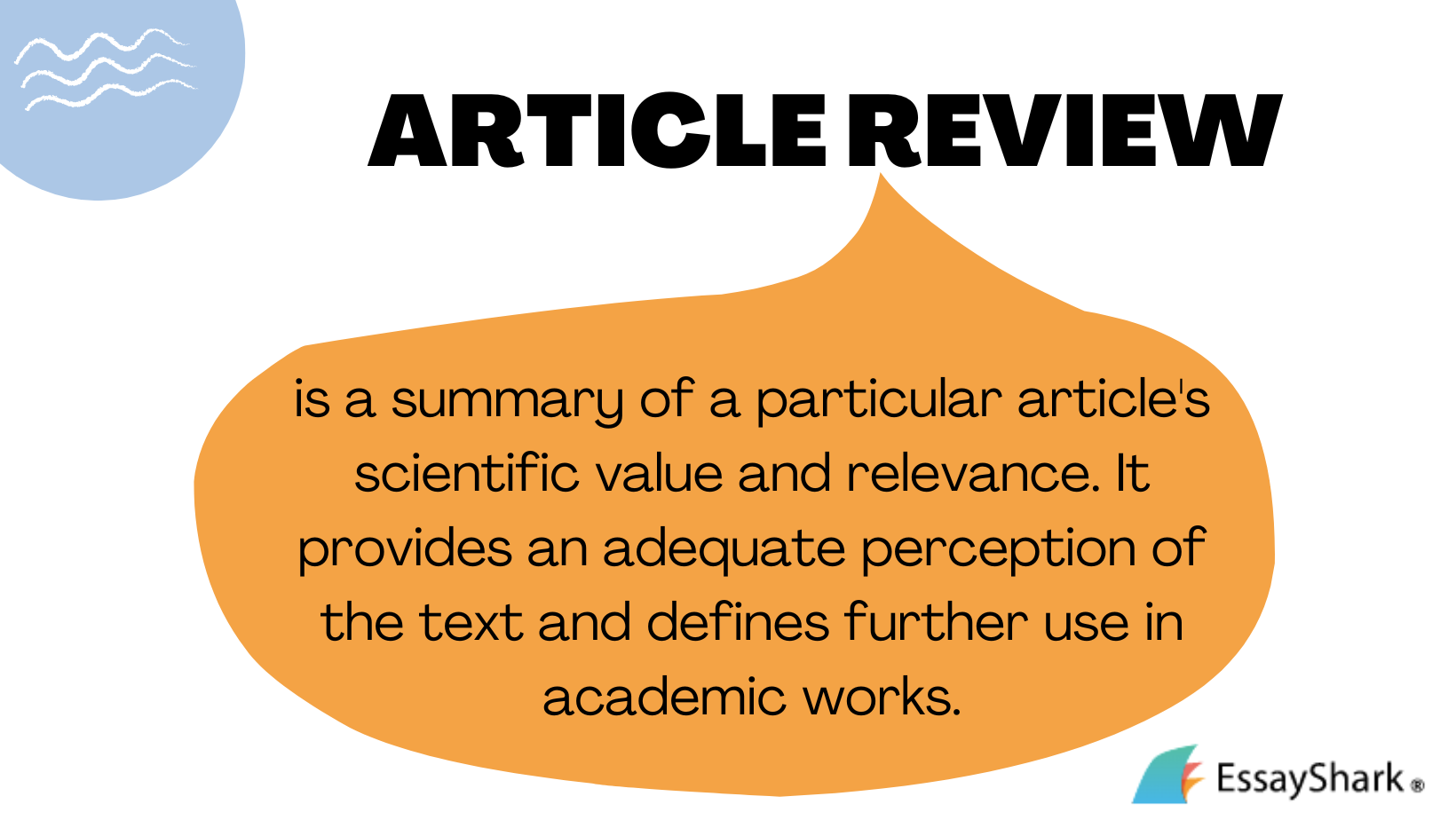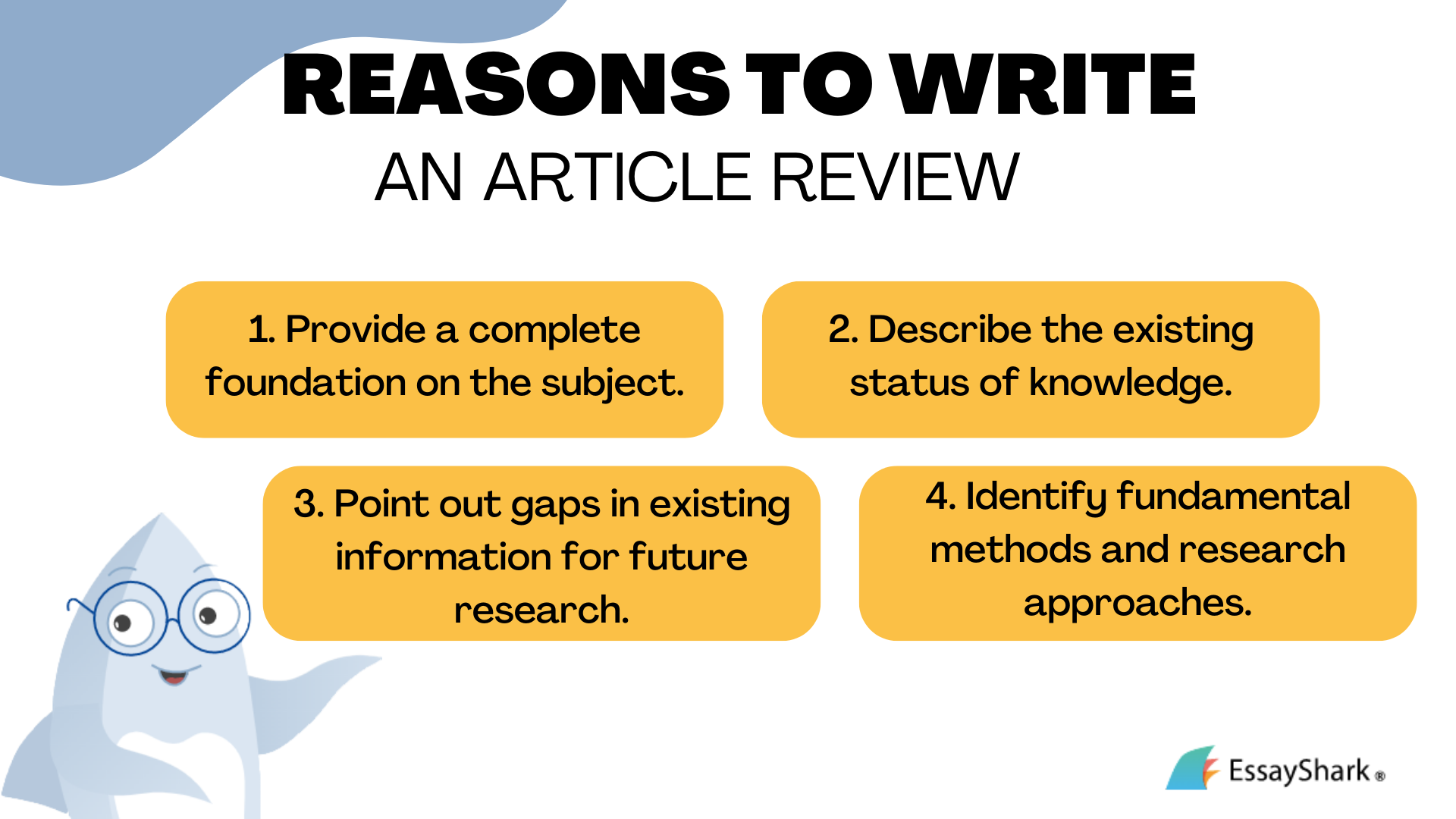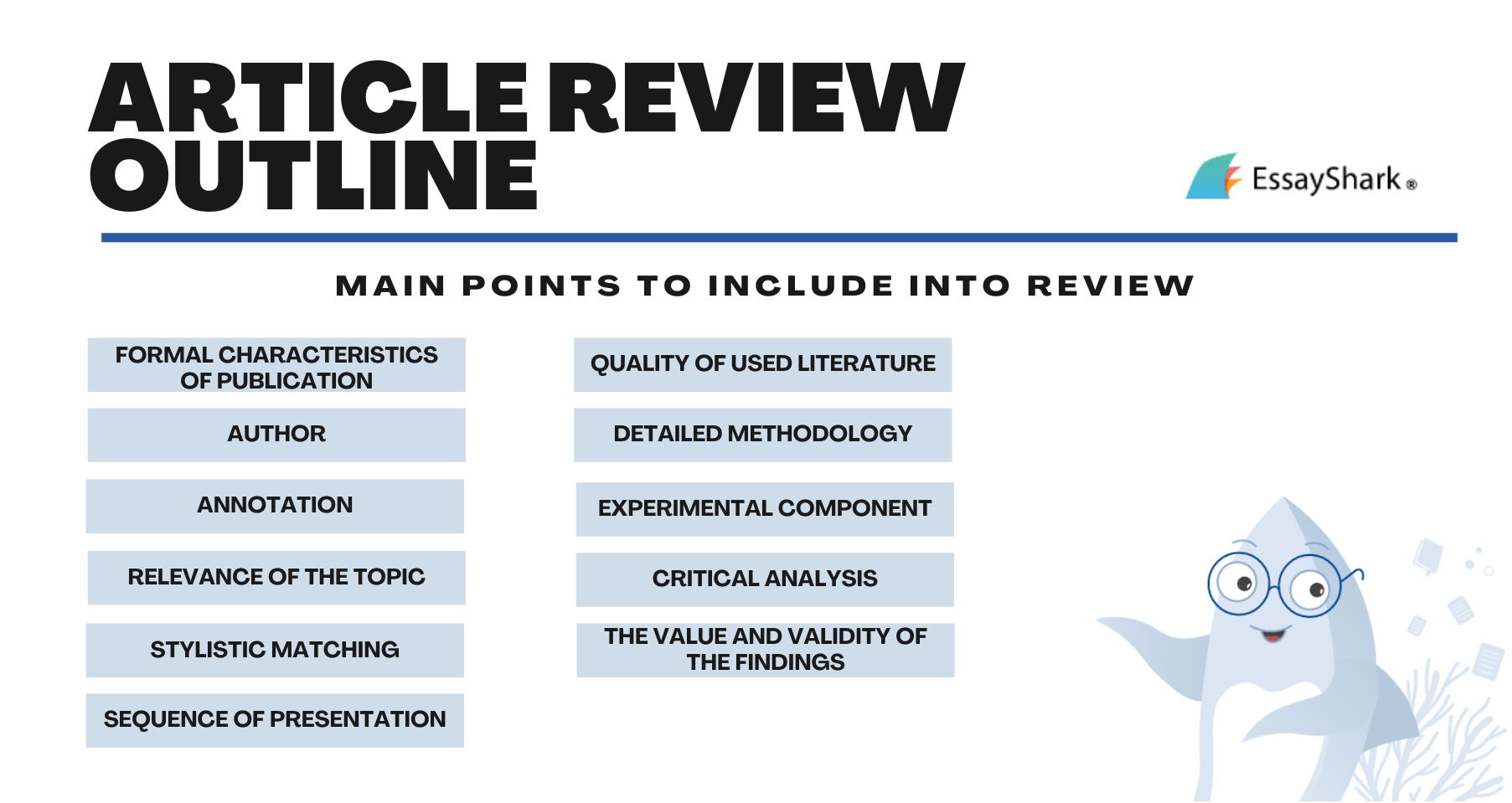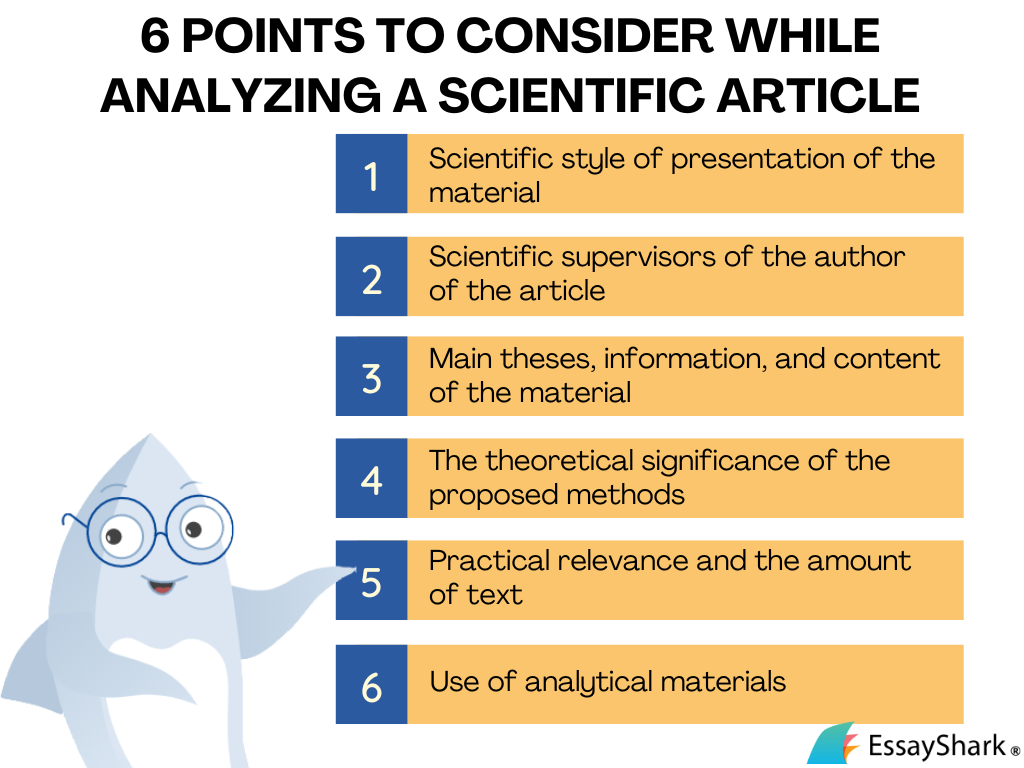If you can’t imagine how to cope with writing an article review, don’t worry, we are going to help you with this task. We are going to discuss what is an article review and how to write it, and you will find a useful article review example. With the help of this guide, prepared by our essay writer service, you will cope with article review writing faster.
Table of contents
- What is an article review?
- Why you need an article review
- How to write an article review
- Tips on how to review an article
- How to write a journal review: criteria for evaluation
- What article review topics to choose
- MLA and APA article review formats
- Practical recommendations for article review writing
- Article review example
- To sum up
What is an article review?

Knowing the definition of an article review is necessary for all who are going to write it. A review of an article is a necessary condition for adequate perception of the text for further use of the provisions formulated in it. Today, a large number of scientific printed and electronic articles are published. In a vast amount of information, you need to learn how to select and analyze the studies that have real scientific value and relevance.
Why you need an article review

The purpose of an analytical evaluation of an article written by another author is to determine the applicability of the hypotheses, theories, and calculations outlined in it for the reviewer’s own developments. Any science is a process of searching and applying relevant information to create new knowledge. Therefore, specialized journals are an indispensable source of information through which scientists exchange the results of their own searches.
Writing a review involves analysis. Analysis is a way to study the structural elements of a phenomenon, process, or object. Scientific publication must be logically structured. In this regard, it lends itself to analytical analysis and evaluation.
The methodology for analyzing a scientific article may differ depending on its thematic focus. For example, a study published in a physics and mathematics edition is dealt with differently than in a journal with a humanitarian direction. But there are general principles that must be followed.
How to write an article review

An article review outline is drawn up taking into account the following key elements:
- Formal characteristics of publication. In the scientific community, the credibility of a particular journal plays a special role. It is determined by various factors: traditional popularity (there are names that have indisputable authority), strong citations indicating that the publication is publishing relevant research, strict peer review (ensures selection of quality articles), and thematic focus (the narrower it is, the more likely it is to find really useful content for the reader).
- Author. A well-known scientist in his or her field inspires more trust and interest. You also need to pay attention to what scientific institution or university the author represents. If the article was written within the framework of a grant, this gives it additional value, because the topic presented by the author has passed the justification and competitive selection.
- Annotation. Before the main material, the main theses and the hypothesis must be stated. The annotation helps the reader to determine in advance whether the text will be useful and interesting.
- Relevance of the topic and novelty. Most scientific journals require authors to highlight these points separately in the body of the article. It is important for the reader of an article to initially understand what problems it solves. In addition, the value lies in the fact that such solutions have a scientific novelty of the topic, an innovative approach, and a unique point of view on the problematic in demand.
- Stylistic matching. From the first lines, the reader must make sure that the author is a serious expert in his or her field. Strict criteria for style, terminological clarity, and text integrity must be met. Only a person with the appropriate skills can write a valuable scientific article.
- Sequence of presentation. A scientific text necessarily has a clear structure and logic of presentation. The hypothesis formulated at the beginning must be comprehensively considered using strictly defined methods and sources. In the end, well-founded conclusions are drawn.
- Quality of used literature. Before reading the main body of the article, be sure to open the list of used literature. These should be authoritative and thematically relevant texts. In addition, one of the first points in the article itself is a detailed analysis of what previous research the author relies on.
- Detailed methodology. Without this point, the material presented loses its solidity and value. Only a strictly defined method gives a scientist the right to build a theory and draw conclusions.
- Experimental component. The data of experiments, sociological surveys, and scientometric research are presented correctly and within the framework of the accepted terminology. For a specialist in the relevant field, they should be easy to understand. The reviewer should evaluate how the researcher recorded events, whether their interaction with other phenomena was studied, and how the dynamics were assessed. Which approach was used – subjective, creative, or dogmatic?
- Critical analysis. The methodology considers the value of the work in two main aspects. Theoretical: What new knowledge does the publication provide? Who needs this theory? Practical: Has it been tested? How and where can the results be used? What do they change? How impartial is the author? Are his or her conclusions substantiated, and do they correspond to the facts and research results presented in the article?
- The value and validity of the findings. The final part of the text is presented taking into account the conducted research. The conclusions correlate with the previously described novelty, relevance, and target orientation.

When analyzing, it is also necessary to take into account the specific type of article. For example, an analytical review in philosophy will be very different from a review in applied engineering.
Tips on how to review an article
Experienced scientists develop their own method of reviewing articles. For novice researchers, the following tips will be useful:
- Carefully read the requirements for the format of articles in manuals on the topics you are interested in (they usually highlight all the key elements necessary for compiling a high-quality text).
- Regularly review new issues of authoritative publications in your industry (even if the topics of the articles are not directly related to your research, you will improve your style and learn to clearly display all the necessary elements).
- When reviewing someone else’s text, do not take it as the ultimate truth, even if it was written by the most authoritative author (develop controversial and critical thinking yourself).
- Analysis is greatly simplified if the researcher followed the logic and structure of the elements. If in the text, he or she goes from one topic to another and there is no step-by-step presentation, this is a gross violation, which is most often made by novice researchers. What will guarantee a high assessment and a good grade is a logically structured consideration of the article.
How to write a journal review: criteria for evaluation
When choosing and analyzing a scientific article for writing a review, you should pay attention to:

Only extensive experience in analyzing numerous scientific texts will help a novice scientist develop his or her own style and learn to express the thoughts within the framework of the article review.
What article review topics to choose
If you look for article topics that you can analyze, then you have compiled a list of the most interesting ones.
- “Earth has a hidden layer, and no one knows exactly what it is.”
- “Abortion is now legal in Argentina, but opponents are making it hard to get.”
- “A.I. here, there, everywhere.”
- “Do liberals care if books disappear?”
- “China censors the Internet. So why doesn’t Russia?”
- “How climate change may affect your health.”
- “Criminal justice is a state issue.”
- “Of Nazis, crimes and punishment.”
- “Too much choice is hurting America.”
- “Disabled Americans are losing their lifeline.”
MLA and APA article review formats
Citation styles like MLA and APA can be a real headache when it comes to article review writing. You must correctly express your thoughts, analyze them, and bring them into a coherent form. In addition, you also need to ensure your citing is done correctly. At first glance, this detail may seem inconsequential, but incorrect formatting can be the reason why you get a low grade for your article review.
The good news is that both an MLA and APA format article review have very subtle differences. This means that you don’t need to learn a completely different way of highlighting your sources. If you understand the small differences, you will make your article review writing much easier. However, these similar features can bring you some troubles, since they are the ones that confuse people.
For both an MLA and APA style article review, formatting requires similar information, which must include: author’s name, source name, publisher, and publication year. However, the order in which this information is organized is slightly different from each other.
If you are using APA format for citations, you should pay more attention to punctuation, as it differs from MLA format. You also need to include a publication place. APA citations should be written in this way: the author’s last name, his or her initials. (Year of publication). Title of source in italics. (Number of edition). Publication place: Publisher.
Example: Blunt, B. (2021). The Greatest Articles in the World. (2nd ed.). Italy: Pizza Publications.
If you are using MLA format style, your citation should be written in this way: Author’s last name, his or her first name. Name of source in italics. Number of edition, publisher, year of publication.
Example: Blunt, Bill. The Greatest Articles in the World. 2nd ed, Pizza Publications, 2021.
Practical recommendations for article review writing
Academic reviews attract close attention from the scientific community today, since they are synthesized knowledge that guides and informs researchers in the relevant field. Many peer-reviewed journals have begun to introduce this type of publication into their editorial policy, actively working with authors, attracting those who have mastered the international methodologies of different types of reviews.
In terms of format, most reviews follow the IMRAD structure (Introduction, Methods, Results, and Discussion) to varying degrees. Introduction describes the relevance of the study and justifies the need for writing a review. If reviews on a similar topic were previously published, the author analyzes them and builds arguments for conducting a new review. The introduction ends with research questions.
The Methods section reproduces the methodology in detail, including procedures for searching, selecting sources, checking them for relevance, and methods for analyzing the literature. When using more sophisticated statistical, quantitative, and qualitative methods, either a reference is made to the appropriate methodology, if it is widely used and known, or the entire process is described in detail so that any scientist can repeat the study.
In the Results section, which can be combined with discussion of the results, groups of articles identified in the process of content analysis are analyzed, generalizations are made, and information about trends, gaps, objectivity, and other results is synthesized.
Review titles usually have two parts. The first part reveals the research topic. The second part (after the colon) specifies the type of review. Such a title helps readers to immediately identify the type of publication when searching.
The number of sources in the review depends on how much you cover the topic. It is common for subject field reviews to include hundreds of titles. Since not all sources are cited or included in the description of the results, often a complete list of all selected articles is presented in the form of an appendix.
Article review example
If you have never written this type of academic paper, it is recommended to get acquainted with journal review samples. They will give you a better understanding of how to write your own review. We present an article review sample that will be extremely helpful to you.
Marketing Means Manipulating Customers Into Purchasing Something They Do Not Need
Marketing is among the most crucial elements of any enterprise. The article “Manipulation in Marketing: How It’s Used, and How to Use It ethically” by Scott Oldford focuses on the prevalence of manipulation in the current marketing strategies and how enterprises can ethically use them. People can be manipulated to believe in things they did not think through modern targeting in marketing, where the meanings have been interpreted as anyone, including business owners, marketers, government, and the media. Giving a deeper insight into the manipulation in marketing will help understand what is right, what should not be done, and how things should be done during marketing.
The article begins by focusing on the various marketing methods, including social media marketing, which is dominant during this era. The dominance of this kind of marketing leads to unsuspecting or unaware users who subconsciously take in information from various sources, including billboards, newspapers, magazines, commercials on television, and social media, such as YouTube and Facebook, without comprehending the content. The article describes the manipulation used by giant companies such as Coca-Cola that have dominated the market for years (Oldford). Coca-Cola manipulates its customers by ensuring they are present almost everywhere, including newspaper ads, TV commercials, and billboards, forming a bond with its users. While many companies may not see the essence of this form of marketing, it is a profound and proven way of persuasion.
Institutions and businesses continue to target groups in a given population as they understand individuals get attached to particular interests, political beliefs, and hobbies. With the current accessibility to algorithms in various platforms such a Facebook and Google, businesses and individuals can aim, re-aim, and manipulate the target population. For example, media can influence individuals to believe in new campaigns and agendas. Hence, companies need to understand how they can control their audiences each day. Also, individuals in marketing need to realize that they should incorporate manipulation in their marketing, as it is the sole method of creating raving fans who can buy goods and services without distorting their trust in an enterprise.
Since manipulation is a component of today’s marketing, businesses need to understand how to do it right. When manipulation in marketing is done correctly, it positively impacts the business and target audience. The article emphasizes that when a product is genuine and has a real noticeable influence on the user, such manipulation is desirable. For manipulation through marketing, enterprises need to have a deep comprehension of their audiences to ensure they do not partake in activities that can hurt their relationships (Sinha, et al. 38). Helping one’s customers involves manipulating them so that they can find the solutions to satisfy their needs (Busuttil 32). However, when manipulating, one must focus on the relevance to ensure that the business gives a significant value by providing the consumer with what they need. Enterprises also need to remain intimate by the continuous provision of value, remaining real, and building trust. They should also be omnipresent to ensure that they are always on the mind of their customers.
Summarily, the article brings out the best version of manipulation in marketing. It presents its advantageous side to both the consumers and enterprises, ensuring a symbiotic relationship. Understanding how to do it remains the most crucial test that any business or individual needs to take.
Works Cited
Busuttil, Laurie R. “Toward a Practical Theology of Marketing: A Five Ps Approach to the Business of Persuasion.” Journal of Biblical Integration in Business 20.2 (2017).
Oldford, Scott. “Manipulation in Marketing: How It’s Used, and How to Use It Ethically.” Entrepreneur, 2018, https://www.entrepreneur.com/article/321611.
Sinha, Moumita, Jennifer Healey, Faran Ahmad, Varun Gupta, and Niloy Ganguly. “Persuasion: What Jane Austin Would Have Written.” Workshop on Artificial Intelligence in Affective Computing. PMLR, 2020.
To sum up
Reviews as a genre of scientific communication are a universal mechanism for the dissemination and clarification of knowledge about the problem under study, allowing not only to determine the boundaries of a specific problem field and identify the main trends in its study but also to localize gaps in existing knowledge within its framework.
The use of reviews allows you to get the most objective understanding of the degree of study of the analyzed issues at the international level. This allows you to reduce information gaps in the field of scientific communication. Writing reviews requires a thorough approach from authors within the framework of a given methodology, based on attention to detail, in-depth knowledge of the language as a tool for international scientific communication, and an understanding of the impact that a qualitative review can have on the international scientific community. Hence the objectivity of the author, the depth of the review, and the scientific logic of its presentation are the criteria that significantly determine its scientific value.
If you find yourself in the situation where you don’t know how to write this type of paper, you can order an example of an article review from EssayShark paper writer. Of course, this sample will be well structured, unique, and sources will be correctly cited. But the main thing is that after receiving an article review from our term paper writing service, you will know how to write it yourself without any issues.
Photo by StockSnap from Pixabay









